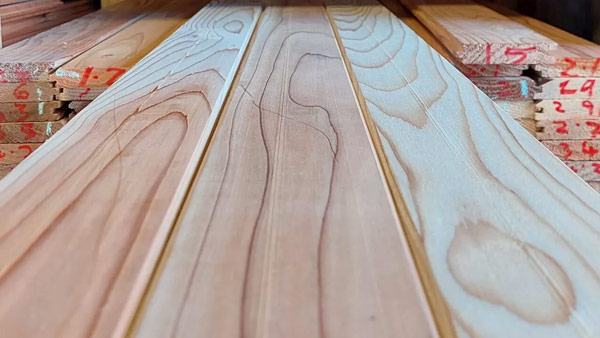In New Zealand, Lawson Cypress timber finds versatile applications due to its durability and appealing qualities. It’s commonly used in construction, crafting durable exterior features such as weatherboards, fencing, and decking. Its fine grain and resistance to decay make it a preferred choice for outdoor furniture and interior finishing. Moreover, its distinct aroma serves well in wardrobe construction, acting as a natural insect repellent. This timber plays a vital role in preserving the country’s landscapes, as it’s also used for erosion control and reforestation projects, showcasing its adaptability and significance across various industries.

Uses
- Internal and external joinery
- Built-in furniture
- Exterior weatherboards (knot-free heartwood only)
- Framing
- Decking
Selection factors
- Hard to nail when dry
- Easy to work
- Accepts paint and stains well but resin bleeding can cause damage
- Only heartwood should be used externally
| Common names | Lawson cypress, lawsoniana |
| Species | Chamaecyparis lawsoniana |
| General description | – Heartwood is pale golden brown and moderately durable – Sapwood slightly lighter coloured and less durable – A fine even texture with characteristic small knots – Larger knots are prone to bleed resin which can damage finish coatings – Has a distinctive pleasant spicy smell – Dust can be an irritant – Softwood |
| Origin | Coastal regions of California and Oregon |
| Sustainability | Plantation grown in New Zealand |
| Availability | A small amount is available in New Zealand |
| Durability & treatment | Heartwood moderately durable – cannot be pressure treated; can be boron treated by diffusion |
| Drying | Dries well but boards in full sun become brittle and can distort and knots |
Technical Specs
| Physical Characteristics | ||
|---|---|---|
| Shrinkage | Tangential | 3.5% |
| Radial | 1.9% | |
| Strength group | Unseasoned | NDA |
| Seasoned | NDA | |
| Density | 485 kg/m3 | |
| Hardness | 2.5 | |
| Durability Class | Moderately durable |
